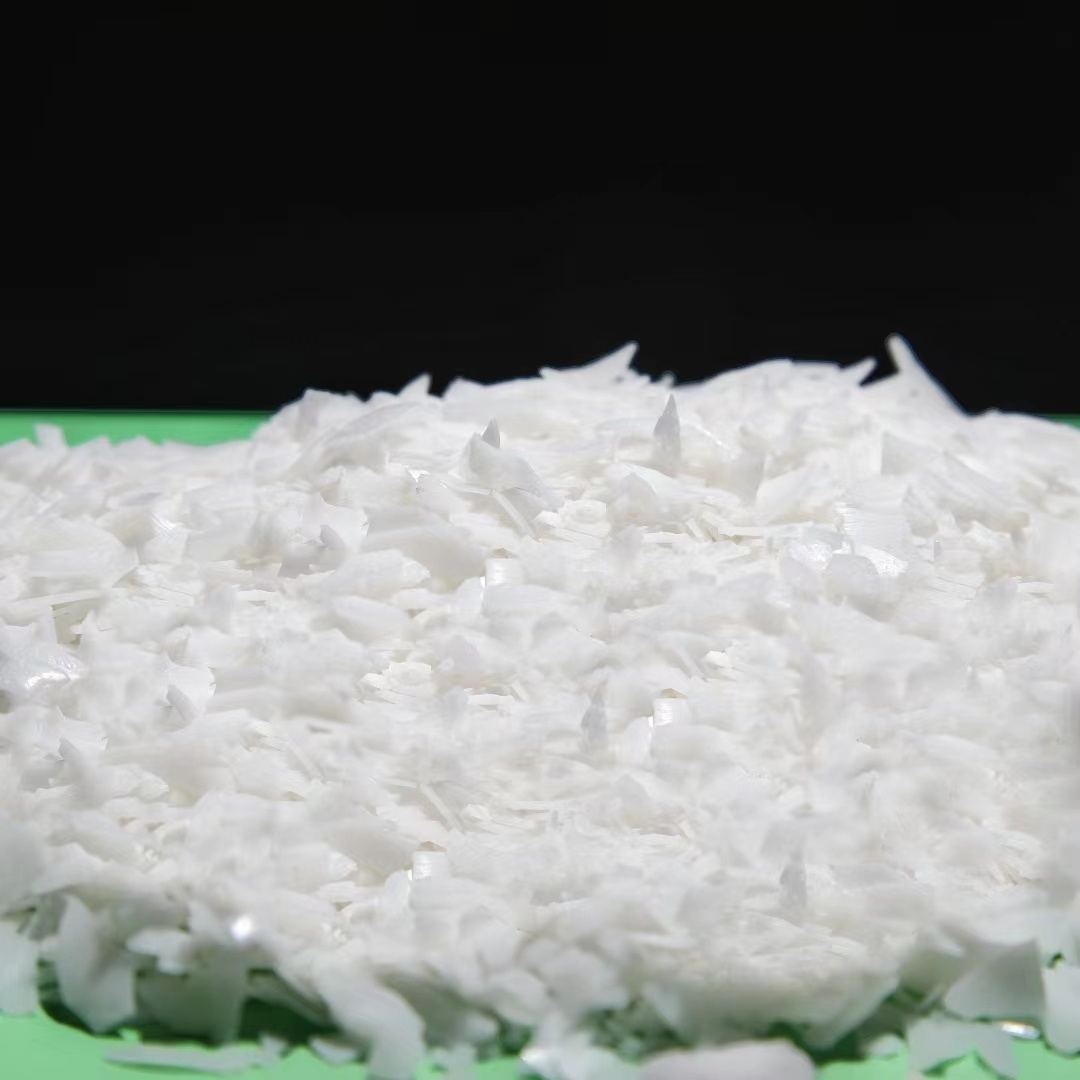Why Internal Lubricants Are Essential for PVC Applications: Unlocking Performance and Durability
Release time: 2025-07-13
Why Internal Lubricants Are Essential for PVC Applications
Understanding PVC and Its Applications
Polyvinyl chloride (PVC) is one of the most widely utilized synthetic plastic polymers in the world. It is known for its durability, chemical resistance, and versatility, making it an ideal choice for a plethora of applications, from construction materials to automotive components. However, PVC can be challenging to process due to its high viscosity and tendency to degrade under heat. This is where **internal lubricants** come into play, significantly enhancing the processing characteristics of PVC materials.
The Importance of Internal Lubricants in PVC Processing
Internal lubricants serve a fundamental role in the processing of PVC by reducing friction and improving flow during manufacturing. Their incorporation leads to several critical benefits:
1. Reduction of Viscosity
Internal lubricants help to lower the viscosity of PVC resins, allowing for easier processing. By providing a smooth, low-friction medium, they facilitate better mixing and extrusion, ultimately leading to a more uniform product.
2. Enhanced Thermal Stability
PVC can degrade at high temperatures if not properly managed. Internal lubricants enhance thermal stability by minimizing thermal degradation, which helps preserve the integrity of the polymer during processing.
3. Improved Surface Finish
A smooth surface finish is crucial for aesthetic and functional quality in PVC products. Internal lubricants aid in achieving a superior surface finish by reducing the roughness of the extruded products and ensuring a more polished appearance.
4. Increased Production Efficiency
By improving flow and reducing friction, internal lubricants contribute to faster production cycles. This efficiency can lead to increased output and reduced manufacturing costs, which are essential for maintaining competitiveness in the market.
Types of Internal Lubricants Used in PVC Applications
There are various types of internal lubricants used in PVC processing, each with distinct characteristics and advantages.
1. Fatty Acid Esters
Fatty acid esters are commonly used due to their excellent lubricating properties and compatibility with PVC. They enhance processing and improve the surface properties of the final product.
2. Metal Soaps
Metal soaps, such as zinc stearate and calcium stearate, act as effective internal lubricants in PVC applications. They not only provide lubrication but also improve thermal stability and act as a processing aid.
3. Polyethylene Wax
Polyethylene wax is another popular choice for internal lubrication. It helps reduce melt viscosity and enhances the flow characteristics of PVC, making it easier to process.
4. Silicone-Based Lubricants
Silicone-based lubricants offer unique advantages, including high thermal stability and low surface energy. They are particularly effective in applications requiring a high degree of lubrication and a smooth surface finish.
5. Organic Lubricants
Organic lubricants, including certain natural waxes and oils, can also serve as internal lubricants for PVC. They are often favored for their eco-friendly properties and ability to improve the overall performance of PVC products.
Factors Influencing the Choice of Internal Lubricants
When selecting the appropriate internal lubricant for PVC applications, several factors must be considered:
1. Compatibility with PVC Resins
The chosen lubricant must be compatible with the specific type of PVC resin being used. Incompatible lubricants can lead to issues such as phase separation and reduced mechanical properties.
2. Processing Conditions
The processing parameters, including temperature and shear rates, can significantly influence the effectiveness of an internal lubricant. It's essential to choose a lubricant that performs optimally under the specific conditions of the manufacturing process.
3. Desired Product Characteristics
Different applications may require specific product characteristics, such as flexibility, strength, or transparency. The internal lubricant should be chosen to enhance these properties in the final PVC product.
4. Regulatory Compliance
In many industries, especially in food packaging and medical applications, compliance with regulatory standards is critical. Selecting internal lubricants that meet these regulations is essential to ensure safety and product integrity.
Case Studies: Internal Lubricants in Action
To illustrate the significance of internal lubricants in PVC applications, let's delve into some case studies.
1. PVC Pipes and Fittings
In the production of PVC pipes and fittings, internal lubricants play a crucial role in ensuring smooth extrusion and maintaining dimensional accuracy. By reducing friction and enhancing flow, manufacturers can produce high-quality pipes with consistent wall thickness, minimizing the risk of defects and ensuring long-term durability.
2. PVC Flooring
For PVC flooring products, achieving a smooth surface finish is essential for both aesthetics and functionality. The incorporation of internal lubricants allows for better dispersion of pigments and fillers, resulting in vibrant colors and a uniform texture. This leads to improved wear resistance and enhances the overall lifespan of the flooring.
3. Automotive Components
In the automotive industry, PVC is utilized for various components, including dashboards and trim. Internal lubricants improve the molding process by enabling precise detailing and preventing material sticking to molds, ultimately enhancing the production efficiency and quality of automotive parts.
Best Practices for Using Internal Lubricants in PVC Applications
To maximize the effectiveness of internal lubricants in PVC processing, consider the following best practices:
1. Conduct Thorough Testing
Before scaling up production, conduct thorough testing to evaluate the performance of the chosen internal lubricant. Assess its impact on viscosity, thermal stability, and final product properties to ensure compatibility and effectiveness.
2. Optimize Processing Conditions
Fine-tuning processing conditions can significantly enhance the performance of internal lubricants. Adjust temperature, shear rates, and other parameters to achieve optimal results during manufacturing.
3. Monitor Product Quality
Implement quality control measures to monitor the performance of PVC products after incorporating internal lubricants. Regular inspections can help identify any issues early, allowing for timely adjustments to the manufacturing process.
4. Stay Informed on Industry Trends
The field of PVC processing is continually evolving, with new lubricants and technologies emerging regularly. Staying informed about the latest advancements can help manufacturers select the best internal lubricants for their specific applications.
Conclusion
Internal lubricants are indispensable in the world of PVC applications, playing a crucial role in enhancing the efficiency and quality of production. By reducing viscosity, improving thermal stability, and ensuring a superior surface finish, these lubricants enable manufacturers to produce high-quality PVC products that meet the demands of various industries. Understanding the types of internal lubricants available, their mechanisms, and the factors influencing their selection is essential for optimizing PVC processing and achieving superior results.
Frequently Asked Questions (FAQs)
1. What are internal lubricants, and how do they work with PVC?
Internal lubricants are additives used in PVC processing to reduce friction and facilitate smoother flow during manufacturing. They work by lowering the viscosity of the resin, improving thermal stability, and enhancing the overall performance of the final product.
2. Which types of internal lubricants are most effective for PVC?
Effective internal lubricants for PVC include fatty acid esters, metal soaps, polyethylene wax, silicone-based lubricants, and organic lubricants. Each type has unique properties that can benefit specific applications.
3. How do internal lubricants affect the processing of PVC?
Internal lubricants reduce viscosity, enhance flow characteristics, and improve thermal stability during PVC processing. This leads to faster production times, better surface finishes, and increased overall efficiency.
4. Are there any environmental concerns associated with internal lubricants?
While some internal lubricants are synthetic, there are eco-friendly alternatives available. It’s essential to evaluate the environmental impact of lubricants and choose those that comply with industry regulations.
5. How can manufacturers ensure the best performance from internal lubricants?
Manufacturers can ensure optimal performance by conducting thorough testing, optimizing processing conditions, monitoring product quality, and staying informed about industry trends related to internal lubricants.
 sales@feihengchem.com
sales@feihengchem.com
 +8615665855919
+8615665855919 中文
中文 English
English España
España











